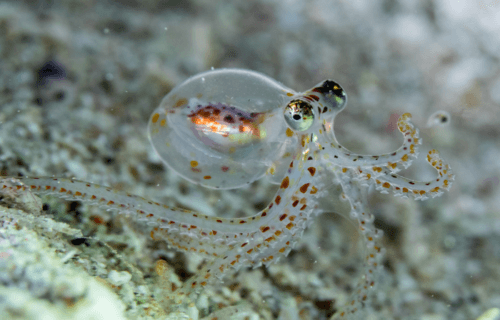BERLIN, Germany — An octopus’ brain is similar to a human’s, shedding fresh light on its intelligence, a new study reveals.
Researchers from the Max Delbrück Center and Dartmouth College say the enigmatic eight-limbed creature descended from the same primitive worm-like animal. It has a complex central nervous system, reflecting similar developments that occurred in vertebrates.
“So, this is what connects us to the octopus!” says Professor Nikolaus Rajewsky, Scientific Director of the Berlin Institute for Medical Systems Biology of the Max Delbrück Center (MDC-BIMSB), in a media release.
The findings even have implications for alien hunters. Octopuses are regarded as the closest thing to how alien life may have evolved.
They are renowned for being clever. They can use tools, carry coconut shells for shelter, stack rocks to protect their dens, and use jellyfish tentacles for defense. In captivity, they can learn to solve puzzles, open jars, and squirt humans they don’t like. They appear to be as smart as the average dog.
Recently, researchers even filmed them throwing rocks and shells at each other. They belong to a group known as cephalopods, which also include squid and cuttlefish. Scientists have long wondered how they turned into the brainiest of the invertebrates, rivalling mammals.
Scientists find microRNA in brain tissue
Now, a study has found octopuses possess a massively expanded repertoire of gene regulators called microRNAs (miRNAs) in their neural tissue. It reflects similar developments that occurred in vertebrates — including humans.
Prof. Rajewsky says the bits of DNA probably play a fundamental role in the development of complex brains. An analysis of 18 different tissue samples from dead octopuses identified 42 novel miRNA families — mostly in the brain. The genes were conserved during cephalopod evolution, being of functional benefit to the animals.
“This is the third-largest expansion of microRNA families in the animal world, and the largest outside of vertebrates,” says lead author Grygoriy Zolotarov, MD, a Ukrainian scientist who interned in Rajewsky’s lab.
“To give you an idea of the scale, oysters, which are also mollusks, have acquired just five new microRNA families since the last ancestors they shared with octopuses – while the octopuses have acquired 90!”
Oysters aren’t exactly known for their intelligence, adds Prof. Rajewsky. His fascination with octopuses began years ago, during a visit to the Monterey Bay Aquarium in California.
“I saw this creature sitting on the bottom of the tank and we spent several minutes – so I thought – looking at each other,” Rajewsky says. “It’s not very scientific, but their eyes do exude a sense of intelligence.”
Octopuses have similarly complex “camera” eyes to humans. They are unique among invertebrates with both a central brain and a peripheral nervous system, capable of acting independently. If an octopus loses a tentacle, the tentacle remains sensitive to touch and can still move.
Octopuses continue to show signs of high intelligence
The reason why octopuses are alone in having developed such complex brain functions may be due to using their arms very purposefully, as tools to open shells, for instance. They are also very curious and can remember things. They can recognize people and actually appear to like some more than others. Scientists believe they even dream, since they change their color and skin structures while sleeping.
“They say if you want to meet an alien, go diving and make friends with an octopus,” Rajewsky continues.
The study author is now planning to join forces with other experts to form a European network that will allow a greater exchange of information. Interest in octopuses is growing worldwide. They appear to be a form of intelligence that developed entirely independently of our own.
“If you do tests with them using small snacks as rewards, they soon lose interest. At least, that’s what my colleagues tell me,” the researcher says.
“Since octopuses aren’t typical model organisms, our molecular-biological tools were very limited,” Zolotarov adds. “So we don’t yet know exactly which types of cell express the new microRNAs.”
The team is now planning to apply a revolutionary technique which will make the cells in octopus tissue visible at a molecular level.
The study is published in the journal Science Advances.
South West News Service writer Mark Waghorn contributed to this report.

